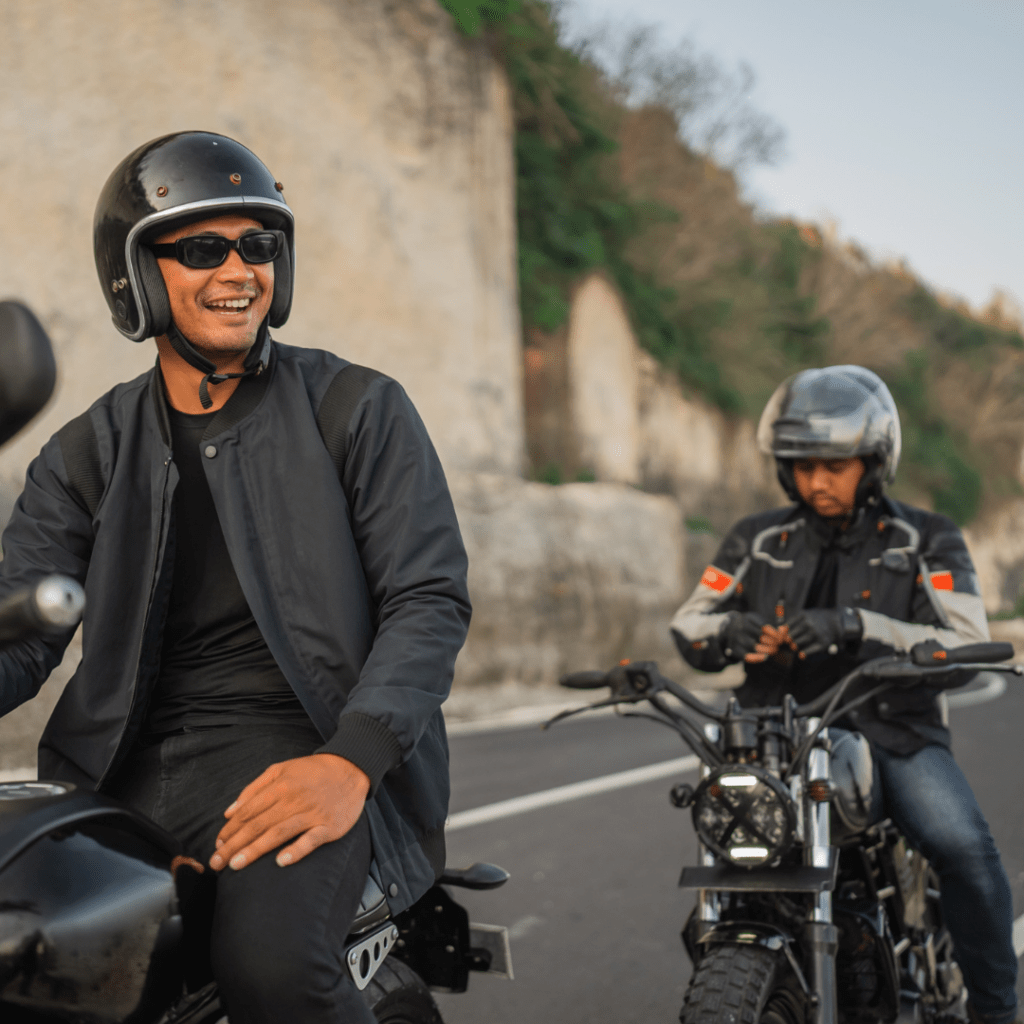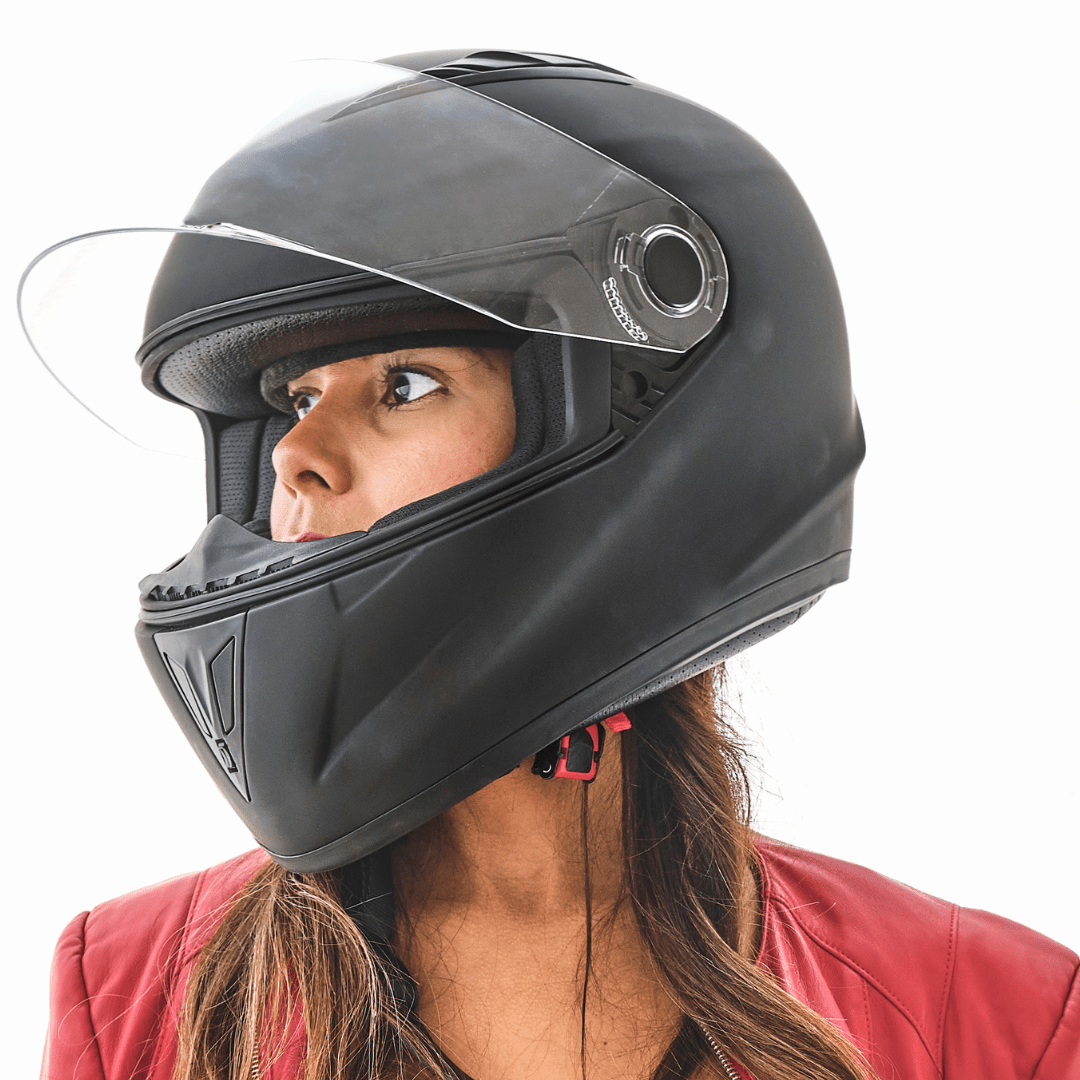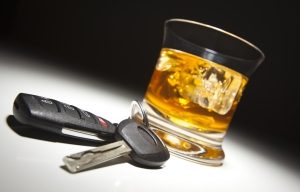
May is Motorcycle Safety Awareness Month, recognized by the NHTSA, and each year, Jones & Swanson is committed to raising awareness about the significant risks associated with motorcycle riding.
In 2022, 6,222 motorcyclists died in crashes. This made motorcycle deaths 15% of all motor vehicle crash deaths that year. This is the highest number ever recorded.
Whether you’re a more experienced rider or a beginner, it’s always good to be prepared and protected, as you may find yourself a possible victim of a catastrophic injury.
Essential Gear
Before hitting the road, one of the first things every rider considers is what gear they’ll need. Wearing the right motorcycle gear is not just essential, it’s often required for safety and legal reasons.
- Helmet: It is the law to wear a helmet in Georgia. Your helmet offers vital head and neck protection in case there is any sort of accident.
- Gloves: Gloves are an important addition to your protective gear. They help prevent abrasions and improve your grip on the handlebars.
- Jacket: Your jacket helps protect your back, shoulders, and elbows. It is recommended to use one that is reinforced with elbow pads and carbon fiber.
- Riding Boots: Wearing boots while you are riding will help your feet maintain control of the bike. They also help protect your feet from rocks or debris that could enter normal sneakers or other unprotective footwear.
- Riding pants: Riding pants, made of leather, textile, or denim, will offer more protection for your legs and occasionally will include knee pads for added security.
- Eye Protection: In certain situations, it is the law to wear protective eyewear. Most helmets come with visor eye guards. However, if they don’t, sunglasses or goggles will help shield your eyes from debris, dust, dirt, and insects.
Additional Riding Gear
If you want to have added protection while out on the road, here are a few options for additional protective wear:
- Reflective wear or added reflective tape can add to visibility while it is dark outside for other drivers.
- CE-rated armor is helpful in impact protection, there is a variety of styles that are flexible and ergonomic.
- Earplugs can help protect your ears from the damage of loud and strong wind impacts.
Proper Fit for Motorcycle Helmet
Your helmet is a crucial part of what keeps you safe while you’re riding a motorcycle. Some people aren’t aware that there are helmets specifically made for motorcycles; not just any bike riding helmet will do.
Wearing your helmet properly may significantly reduce your injuries if you happen to get into an accident. Studies show that helmets are about 37% effective when it comes to preventing motorcycle deaths and about 67% effective at preventing brain injuries.

When wearing your helmet properly:
- It should feel snug but not painful or uncomfortable.
- The cheek pads should be pressing gently against your cheeks, and the chinstrap should fit comfortably against your chin.
- The helmet should not shift easily with movement. If it does, then it is not properly secured.
Defensive Driving Courses
Georgia has the Georgia Motorcycle Safety Program (GMSP). This course gives riders various courses to help them learn and improve their safety techniques. There is also the Basic Rider Course (BRC), which focuses on foundational skills. The Advanced Rider Course (ARC) helps the students develop more advanced techniques.
Motorcycle Maintenance
It is important to do regular maintenance checks on your motorcycle. Here are just a handful of things you can regularly do to make sure your motorcycle is in proper riding condition:
- Always do a visual inspection before riding, look for any loose or leaking parts, and anything that seems out of the ordinary. Do not ride your motorcycle if you aren’t sure of its condition.
- Make sure that all your front, rear, and brake lights are properly functioning.
- Change engine oil on time for your regular manufacturer’s schedule. This can be found in the owner’s manual.
- Test your battery’s voltage regularly; this will help prevent a dead battery and you being stuck on the road in an unsafe area.
- Carry spare spark plugs and change them as needed. These are a common part that often fails.
- Wash your motorcycle regularly and detail as needed. This will help prevent rusting.
Your owner’s manual will go more in-depth about what maintenance will need to be completed and when. Not all models are the same.
Insurance and Licenses for Motorcycles
When looking for insurance for your motorcycle, it is important that you take into account state requirements. Requirements for licensing vary by country and state. Motorcycle insurance in GA is required for owning and operating a motorcycle.
Valid motorcycle insurance in Georgia must meet the following requirements as outlined in Georgia Code § 33-7-11(2024):
- At least $25,000 for bodily injury or death of one person in any one accident.
- At least $50,000 for bodily injury or death of two or more persons in any one accident.
- At least $25,000 for injury to or destruction of property of others in any one accident.
In Georgia, a Class M Instructional Permit is required to operate a motorcycle and owners must carry proof of insurance while riding. Failure to do so could lead to penalties such as fines or suspension of vehicle registration.
Accident Risks
There are certain times of the day and conditions when motorcycle accidents are more common.
- During weekdays, the rush hour (3-6 pm) is usually the time of day when traffic is more congested, which makes the probability of getting into an accident much higher.
- Evening hours may cause reduced visibility, increasing the likelihood of collisions.
- Take into account the weather conditions, such as rain or fog. This will also into the risks of driving on slick roads, or having reduced visibility.
- About 70% of motorcycle accidents happen in intersections. Try to stay out of other vehicles’ blind spots and do not try and weave through traffic dangerously.
Every decision you make while driving impacts your safety and the safety of others. Staying properly informed and well equipped will help prevent any accidents while you are on the road.
Riding at Night
Driving at night can be especially dangerous. Being on a motorcycle adds to the risk of a motor vehicle accident. There are a few essential safety tips that will help keep you safe while you are on the road at it’s dark.
- Wearing reflective gear or adding reflective tape to your motorcycle.
- Check the functionality of your headlight, brake light, and turn signals before going for a night ride.
- Try to keep your visor free from scratches, as this can distort light and reduce visibility.
- Slow down. When it is dark out, you will have reduced visibility, which gives you more time to react in an emergency.
- You can use your horn and/or high beams if necessary to alert other drivers on the road to your presence.
Motorcycle Safety
Prioritizing defensive riding habits and protective gear is always important, whether you are an experienced or a new rider. These tips may also be beneficial for other drivers on the road and can help ensure that all drivers get home safely. Let’s make motorcycle safety a regular priority.
If you have been a victim of a motorcycle accident, seek care immediately, then contact our attorneys at Jones & Swanson to schedule a FREE consultation to find out what steps you need to take next.
FAQ
Do I need to wear a helmet while riding a motorcycle?
Yes, not only is it the law, but it could save your life. Helmets saved an estimated 1,872 motorcyclists’ lives in 2017.
How can I make myself more visible to other drivers?
Keep your headlights on at night, and avoid riding in blind spots. Wearing reflective clothes or vests can help as well.
How often should I do motorcycle inspections?
It is recommended that you do a vehicle check each time you are about to go for a ride. You should be checking the tires, wheels, sensors, lights, chassis, oil, and stands.
What’s the best way to handle slippery roads on a motorcycle?
Driving slowly and avoiding quick, sharp turns will help reduce your chances of a collision.
What does it mean to “adopt a rider”?
This phrase is used to explain when a driver of a car or truck makes an effort to follow a motorcyclist from behind on the road at a five-second distance in hazardous conditions. This helps protect riders from road-raging drivers or dangerous weather.
Jones & Swanson Is A Personal Injury Law Firm Located In Marietta, Georgia, If You Or Someone You Know Has Been In A Motorcycle Accident, Slip And Fall, Or Dog Bite, Seek Immediate Medical Assistance, Then Give Us A Call At (770) 427-5498 Or contact Us On Awjlaw.com for A Free Consultation To Find Out The Next Steps You May Want To Take.
Categories: Auto Accidents, Bicycle Accidents, Catastrophic Injuries, Motorcycle Accident, Safety Tips




